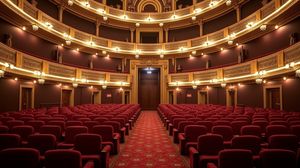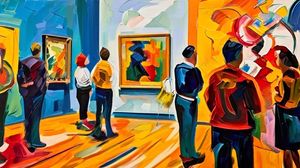
The Harold Pinter Theatre, originally opened in 1881 as the Royal Comedy Theatre, is a splendid venue nestled in London's bustling theatre district. Located just off Leicester Square, this theatre has been a significant cultural landmark for over a century, offering an intimate setting with a seating capacity of approximately 800.
This theatre was designed by the famous Thomas Verity, who infused it with intricate architectural details characteristic of the late Victorian era. The Harold Pinter Theatre is notable for its beautiful stucco façade and opulent interior design, reflecting the grandeur and elegance of its age.
An interesting piece of trivia about the theatre is that it was the first venue in London to stage Harold Pinter's work, solidifying its reputation for showcasing new and innovative drama. In recognition of Pinter's contributions to British theatre, the venue was renamed in his honor in 2011, celebrating one of the most influential playwrights of the 20th century.
The Harold Pinter Theatre has hosted an extraordinary range of performances, from classic productions to avant-garde plays. It has been home to many premieres, including Michael Frayn's award-winning "Noises Off" and more recently, collaborations with Ian McKellen and Patrick Stewart in "No Man's Land" and "Waiting for Godot."
Another intriguing aspect of the theatre is its reputation for being both intimate and atmospheric, thanks to its relatively small size and historical charm, making it a favorite among actors and audiences alike. This ensures a unique theatrical experience where spectators feel closely connected to the performances on stage.
One quirky historical footnote is that in the early 1900s, the theatre famously used a pioneering, mechanical ventilation system designed to enhance the comfort of its audiences, which was quite ahead of its time.
The Harold Pinter Theatre continues to be an important part of London's West End, drawing visitors who are eager to experience its rich history and enjoy world-class performances in a venue that holds a special place in British theatrical heritage.

Making the Most of Your Visit:
Make sure to arrive a bit early to explore the theatre's beautiful Victorian architecture. The Harold Pinter Theatre's exterior and interiors are a stunning example of the late Victorian design, and you'll want some time to appreciate the opulent details both outside and inside the foyer before the show starts.
Check out the unique seating arrangement in the Grand Circle. It might feel a bit more intimate compared to some larger venues, but sitting there offers a fantastic view of the stage without the higher price tag of the stalls, and the acoustics are still excellent.
For those who enjoy history, take a moment to imagine the early 20th-century audiences when the theatre introduced its groundbreaking mechanical ventilation system. Even though technology has moved on, it's a small piece of fascinating trivia that adds to the venue's charm.
Visit the nearby Criterion Theatre Café & Bar for a drink before or after the show. It's a cozy spot with theatre memorabilia, only a short walk away, and it's perfect for continuing your cultural evening.
Be prepared for the theatre's slightly on the quaint side legroom if you're tall. The Harold Pinter Theatre is renowned for its historical charm, but it does mean that legroom isn't as generous as in modern venues. Consider an aisle seat if you need a bit more space.

Visiting Times & Costs:
The Harold Pinter Theatre is open to the public and operates primarily in the evenings when it hosts theatrical performances. Most shows typically start in the early evening, with some matinee performances available on select days. It is advisable to consult the theatre's schedule for specific show times and availability.
Ticket prices for performances at The Harold Pinter Theatre vary depending on the production, seating choice, and time of booking. Prices can range from approximately £15 for upper circle seats to over £100 for premium seats in the stalls. It is recommended to book in advance for the best selection and pricing.
The theatre is fully accessible, with step-free routes available within the building. However, due to its historic nature, some areas might present challenges for those with mobility issues. It's advisable for visitors requiring additional assistance to contact the theatre in advance to ensure the most suitable arrangements are made for their visit. The theatre also provides services such as hearing enhancement devices and accessible toilets.

Address & Map:

Nearby:























